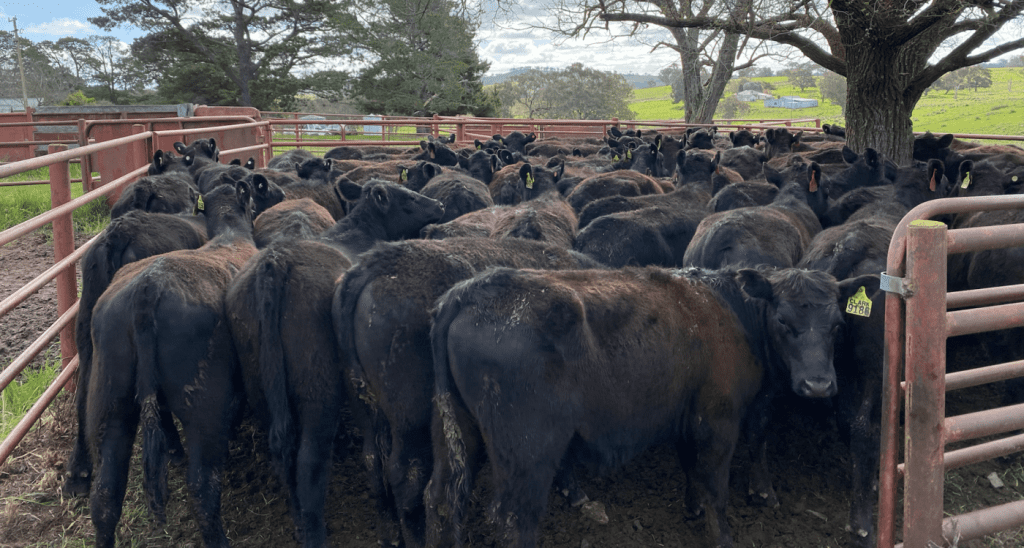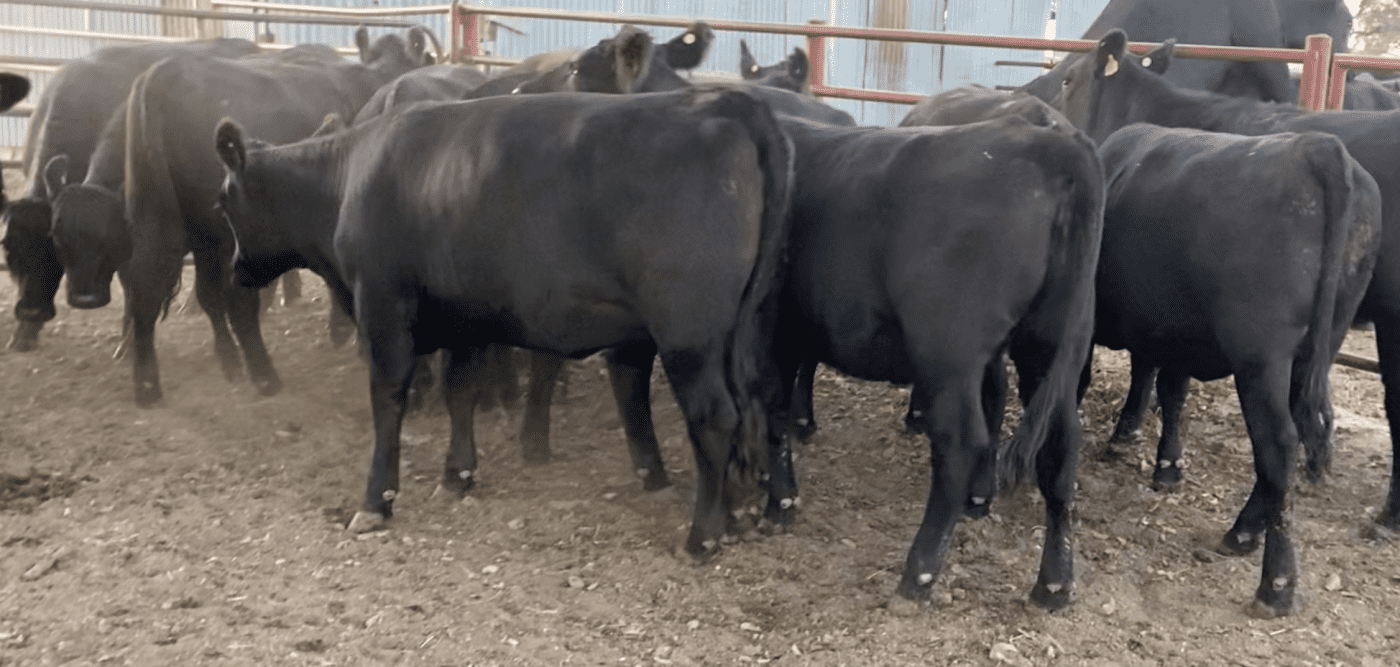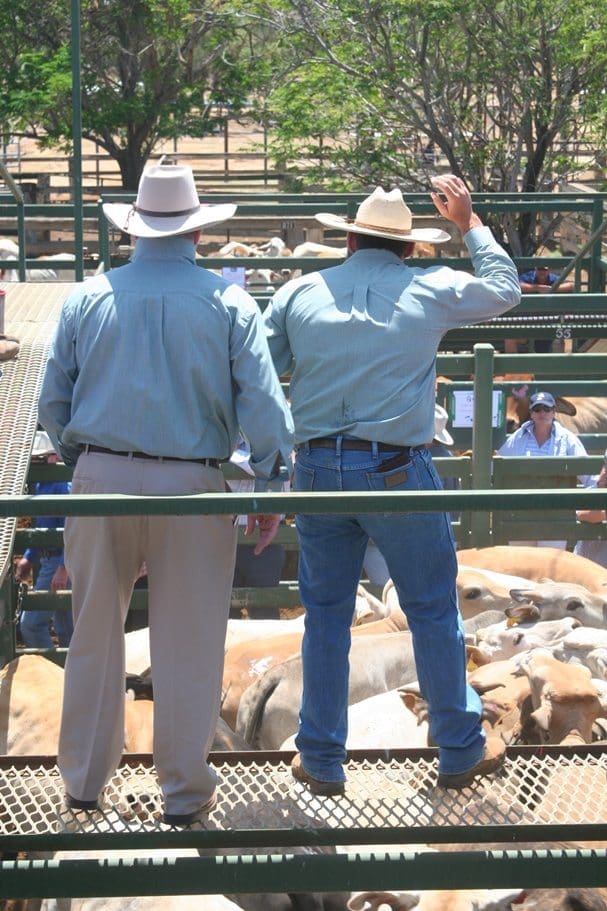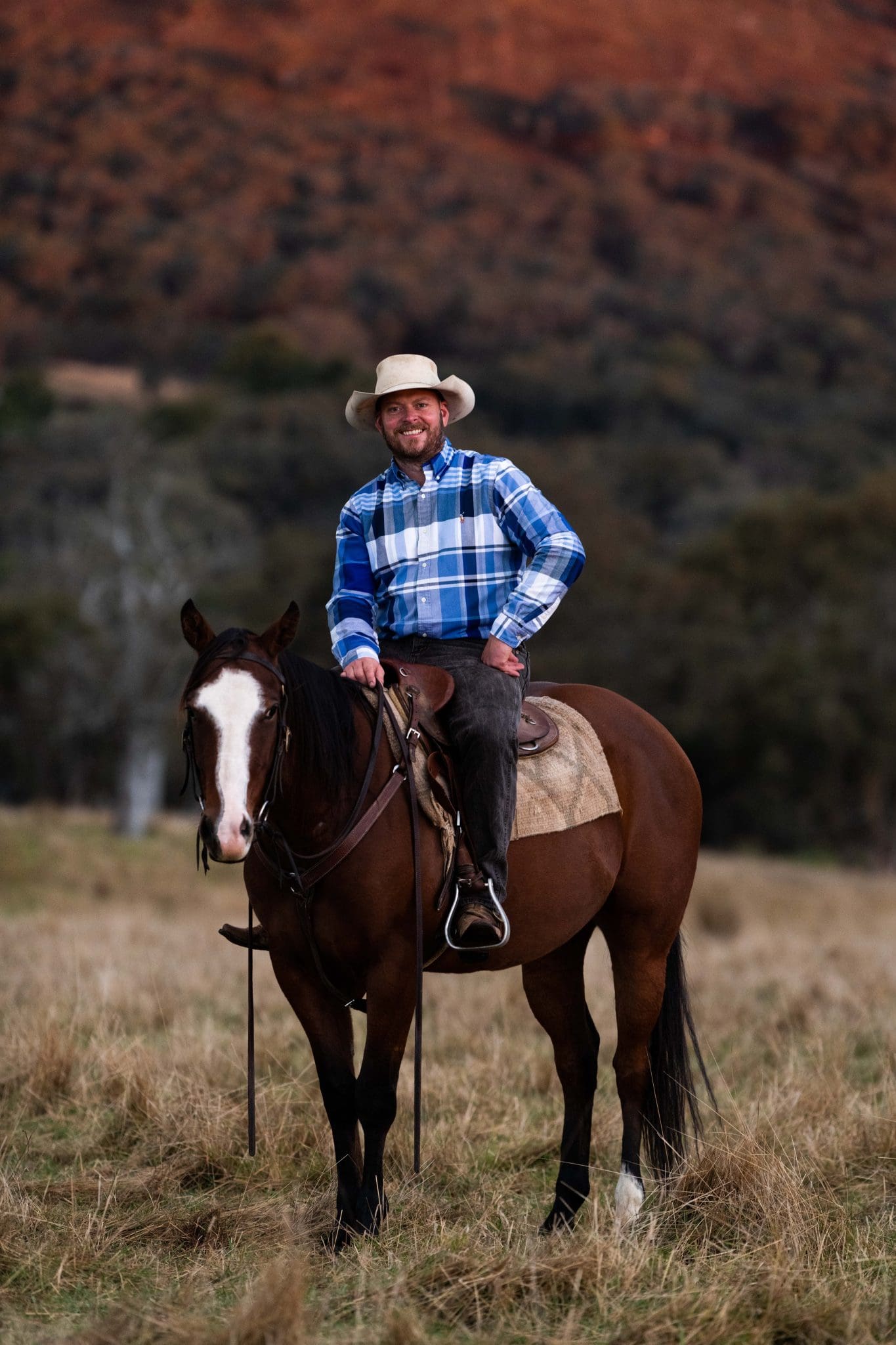
The original intake of heifers in September 2023.
PRICE differentials which saw heifers trading at discounts to steers not seen in eight years created marketing opportunities in 2024 that many savvy traders were able to recognise and act upon.
On Thursday we wrote about leading NSW producer Nigel Kerin, who used forward contracts and swaps in a big way to assemble and market 4500 heifers in an innovative and eye-catching deal, and on Friday about a novel, large-scale trade involving 4000 Kimberley-bred Droughtmaster backgrounder steers sold into Queensland’s channel country.
But it’s also important to note that you didn’t need to be a big producer to take advantage of the available market opportunities.
Andrew Henderson is one southern producer who managed to capitalise on an undervalued heifer market, not once but twice throughout the year.
He is not a full-time producer, instead working full time in his own consultancy businesses dealing with Government and regulations, in addition to industry roles including serving as a director of Sheep Producers Australia and a Senior Fellow at the Australian Strategic Policy Institute.
Despite owning a small property in the Southern Tablelands of NSW, his cattle trades were all executed using agisted land.
His experience demonstrates that you don’t need to be limited by the amount of land you own – or don’t own – to capitalise on seasonal and market opportunities as they arise.
He said his heifer trades in the past year provided cash that enabled him to accelerate improvements to his property, such as fencing, that would have taken much longer to achieve relying only on the production his small property could generate.
His approach also reinforces the notion that buying and selling can be done in a very low risk way, provided you work on the basis of knowing exactly where you start and stop, and work only with what feed you have in front of you – not what you think, or hope, the weather might bring.
When Beef Central contacted Andrew asking for more details on his trades he was happy to share his experience and some of the lessons he learned in the hope it may be of interest or value to other producers or full-time employees looking for similar cattle trading opportunities.
Sep 2023 – an opportunity emerges
This story starts in September last year when the proverbial manure was hitting the fan as seasonal conditions were tough and Bureau of Meteorology El Nino forecasts suggested things were only going to get tougher.
Cattle prices were plunging as producers destocked paddocks en masse, fearing a return to the savage drought conditions that gripped the continent in 2018/19.
“The price had come off so significantly, and it got to a point where it just didn’t seem logical that it could go any further down,” Andrew recalled.
“It had to be nearing the bottom, and fundamentally, the outlook for the market was strong.
“It seemed like good buying if you had the feed and I tested this with several people that I trust and respect – so then the critical component became finding the feed, and basically being able to marry those two things together.”
He placed an ad seeking agistment. It returned just two responses but fortunately the second was just what he was looking for – a big win in a scarce market.
Building a deal around available feed
Andrew assessed the available feed on the agistment block to determine how many cattle he could carry, how they would perform and for how long, and backed that up with local intelligence to double check and refine his assumptions.
He settled on buying black heifers, on the basis they would be easier to sell if the market was still tough at the other end.
He also developed his own trading calculator on an Excel spreadsheet, factoring in all costs related to the trade including transport in and out, agistment cost, buyer commission, inputs, losses and selling costs.
The spreadsheet calculated a maximum price per kilogram that he should not exceed when buying cattle.
The sweet spot at that point in time, according to the calculator, was buying 250kg black heifers for no more than 250c/kg live weight.
“The assumption was we would get no more rain, and that there was enough feed for a six-month trade,” he said.
“We were just playing the ball that was in front of us, and assuming the market would stay relatively still or improve slightly.”
On a worst-case scenario basis without an uplift in the market, the calculator suggested the six-month trade would exceed what could be achieved by putting the money in the bank at 5 percent interest and doing nothing (“a lesson that was given to me in the form of advice from a trusted mentor that has proven to be invaluable”).
Working with a trusted and savvy local agent and his network of commission buyers, it took about a month to find the right cattle, which they were able to buy in several lines at a Carcoar store sale.
Ultimately they managed to secure the number of cattle they needed for an average buy price of $2.11c/kg and an average weight per head of 252kg (some of which are pictured at the top of this article).
As it turns out, wet weather intervened which provided a boost to both the expected weight gains and the value of the cattle during the trade.
The cattle went out in two tranches. The first were sold after 28 weeks at 390kg to a feedlot buyer for $3.05c/kg.

The first tranche of heifers leaving the for the feedlot in March.
The second tranche went after 36 weeks at 450kg, sold through the saleyards for $3.10c/kg.
The trades were financially successful, but just as importantly, they were also low-risk.
“That was the point,” Andrew explained. “The deal worked in the worst-case scenario.
“There was no kind of ‘it has to rain to make it work’ or ‘the market has to lift to make it work’, the deal was solid in the worst-case scenario.”
Going again
By the time they had offloaded in March and May 2024, a significant spread between steers and heifers had opened again.
With plenty of grass on the agistment block Andrew went back into the market and bought more heifers, this time a mix of Angus and quality cross breds, at an average weight of 250kg, and for an average buy price of $2.56.
Most of them have just been sold at an average weight of 412kg for a price of $3.25.
Along the way, with surplus grass, Andrew was also able to complete a smaller trade with 580kg store cows bought at $1.66/kg, adding 40-80kg over just 12 weeks before being sold at $2.70c/kg, also generating a tidy profit and much needed cash flow.
“It was only a small little thing, they just happened to be at the sale that day, and that covered an agistment bill and bought us a second-hand farm buggy, which made me very popular with my kids!” Andrew said.
“Here’s some we’ve prepared earlier” – side by side comparison of cattle leaving after six months and lighter replacements arriving.
Lessons learned
Asked what some of the lessons he had learned were, he said “there were several”, summarised below:
– Play the ball that is front of you – work only with the feed you have, not what you think you might have.
– When agisting country, it’s a high cost model, so tap into local intelligence to ground truth assumptions on how the country performs, how many cattle you can carry in that area and for how long.
– Find a suitable trading calculator or better, make your own, one that factors in all costs involved in the trade the reflect your individual situation.
– If the calculations suggest the return on the trade can’t exceed putting money in the bank, don’t do it.
– Identify your ceiling price and stay disciplined, do not exceed that number at all costs.
– Don’t be afraid to ask advice from mentors and people you trust in your circle, people that want to see you succeed – but ultimately the decisions and the risk are yours.
‘You make your own luck’
“There is that old saying, you make your own luck, but it pays to cast a line out to find agistment, and then put a deal together based on the feed that is there and what the outlook looks like,” Andrew said.
“And making sure that it works in its worst-case scenario. Everything that happens from there is upside.
“The other critical bit is knowing your costs.
“It is easier if you have security of tenure, and that could be in the form of a lease or owning your own place, but with agistment I have to play every ball as it gets delivered, as it is coming down the pitch.
“Understanding your numbers is really critical because every trade has to stack up in its own right.”
He added that he has also moved to using finance from a specialist livestock finance provider.
“It has taken a lot of anxiety out it, because now I know my numbers and I know I can make money under the right circumstances if I maintain discipline.
“The finance cost has added to my cost-base, but it has also meant that I can trade more numbers with more confidence.”
- This item continues our series on smart cattle trades in 2024 – see Thursday’s opening article on Nigel Kerin’s heifer project, and Friday’s article on large numbers of Kimberley-bred steers shifting onto the Channel Country after rain
Effectively promoting your cattle offering
 GOT a special offering of cattle to sell in the yards, online or out of the paddock next year? Expand their potential buyer audience to a massive national beef industry readership via a listing on Beef Central’s new Cattle Listings and Orders Noticeboard.
GOT a special offering of cattle to sell in the yards, online or out of the paddock next year? Expand their potential buyer audience to a massive national beef industry readership via a listing on Beef Central’s new Cattle Listings and Orders Noticeboard.

